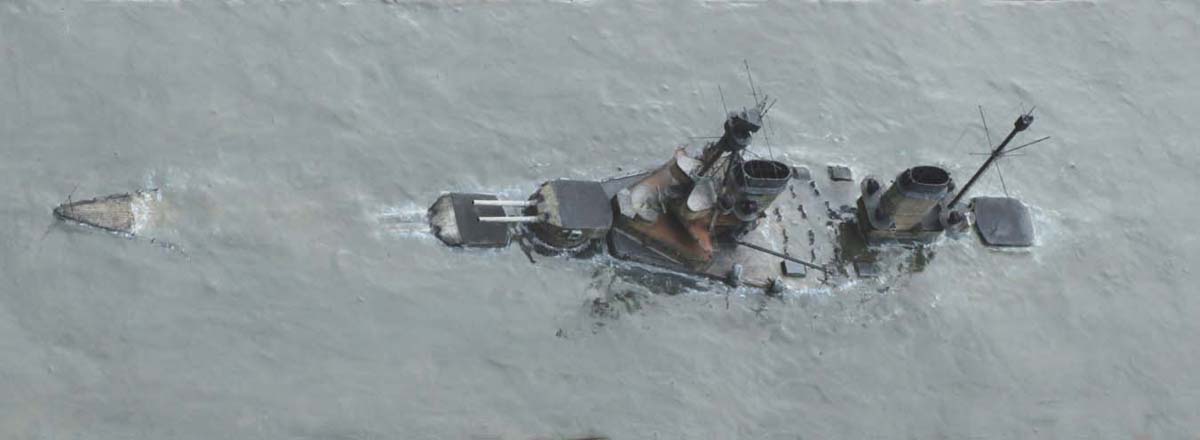
1/700 SMS Hindenburg (HP/Scratch)
|
by Jim Baumann |

1/700 SMS Hindenburg (HP/Scratch)
The 31,000 ton SMS Hindenburg was the last of the trio of large German
Battle-cruisers of the Derfflinger class.
At 698 ft loa and capable of 27.5knots her 8x 12 in guns and secondary
armament of 14 x 5.9 in guns made here a formidable fighting ship.
She was launched in August 1915 and completed in November 1917. Being completed late in the war SMS Hindenburg saw little action. Under the terms of the Armistice the majority of the German high Seas fleet was interned at Scapa Flow from the 21 November 1918.
At 11.20 am Rear Admiral Ludwig von Reuter gave the order to scuttle. Unlike many of the other ships that capsized or even turned turtle whilst sinking, Hindenburg came to rest on the bottom in an upright position at 17:00 hrs the same day. 52 of the 74 interned vessels sank.
Ernest Cox the founder of Cox and Danks--often describes as the man who " bought the German Navy" successfully raised and scrapped 26 destroyers, 5 battleships and 2 battle-cruisers ( Seydlitz and Hindenburg)
After several attempts, often thwarted by severe weather, SMS Hindenburg
was finally raised in July 1930, towed to Rosyth and scrapped 1931-1932.
My model depicts the Hindenburg at low tide in 1920 --the bow is just breaking the surface. She is sitting on the bottom, with some of the more portable items having been removed. (compare with the 1919 post-card of the vessel still carrying canvas dodgers, small winches and wheels.) The diorama was made using an early HP kit of the ship, which was really rather inaccurate in most areas.
Much analysis of old grainy photos and cross-referencing with the plan snippets elicited how the shapes ( probably !) were in relation to the funnels and deck.
The scene fortunately required most of the hull to be submerged and I scratch built the entire fwd superstructure. The funnels were modified to be as correct as possible with the assistance of photos and some excerpts of the original GA plans. The priority od this project was to simulate the water in such a manner that when viewed from directly overhead the viewer can 'just' make out the outline of the hull ; whilst when viewed from a non elevated position the water appears to be opaque. ( Scapa Flow is very tidal and there is much water-borne silt to make the water appear cloudy )
The water was made using Artists medium Acrylic Gel, alas I foolishly chose to ignore the instructions -which clearly stated the gel to applied in layers..... With my water approaching 25 mm in thickness in places it took only 14 short months (!!) in a heated linen cupboard surrounded by bags of silica gel for it eventually dry clear....... Numerous additional layers of CA glue and varnish often the layers being colored with very thin washes of watercolor paint to give translucence and opacity eventually brought up the water level to the desired height
A full illustrated description can be read here in the forum.
Overall I am fairly pleased with the result ; it certainly is a moody scene and has created a talking point in my collection of otherwise floating ship models.!
Many thanks to Nick Dogger for supplying the donor kit
Recommended reading on the the "Grand Scuttle" and its aftermath: with helpful illustrations and dates. Provides great insight into the ingenuity and heroics of the salvers
The man who bought a Navy Gerail Bowman
Cox's Navy Tony Booth
Jutland to Junkyard S C George
